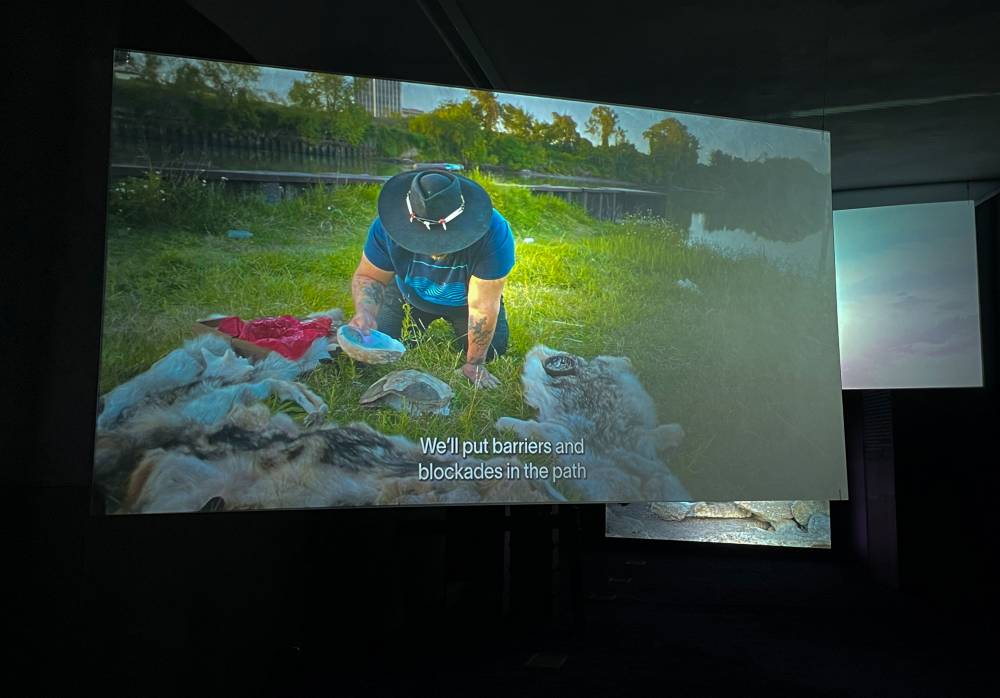A journal for storytelling, arguments, and discovery through tangential conversations.
Wednesday, September 10, 2025
|
Kaya Noteboom
I want to stop thinking about myself. In fact, I wish I could lose my “self” completely. Not for lack of will to live, though. Quite the opposite. I sense with greater frequency that my “self” gets in the way of living, or, is the focus of an inhospitable pressure. It was an unexpected realization, in part because, at present, the need for self-actualization—the pinnacle in Maslow’s “hierarchy of needs”—has become an effigy of Western pop-psychology. With a puzzling degree of certainty, we generally seem to believe in an “authentic self.” It’s this version of the self—not the one you presently are—that’s capable of expressing and utilizing its full creative potential. This actualized form presides like a spectre over our lives, omnipresent since birth, and perpetually out of reach. Art and politics function as modes of symbolic representation within this schema. They present a multitude of techniques to make the self visible to one’s self and to others. These mediums give the self a tangible form and aid in its continual management. The most common notions of selfhood depend on the legibility that art and politics provide, enabling a sense of security in an unstable world. Today, as people’s ability to meet Maslow’s lower needs (food, shelter, and loving connection) are strained by the pressures of late-capitalism, an inversion has occurred. The hierarchy has flipped. Somehow—though I have my suspicions—self-actualization has become the skeleton key to basic survival.
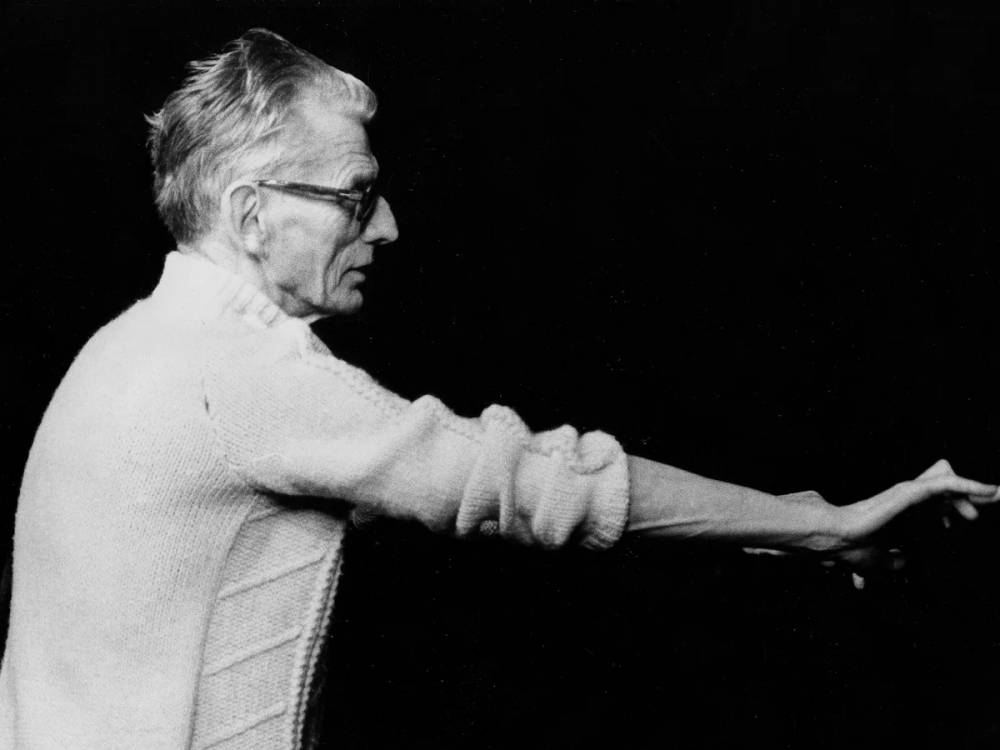
Monday, September 8, 2025
|
Filit Sureki
Ghayath Almadhoun, a Palestinian-Syrian poet born in Damascus in 1979, is a singular voice in contemporary Arabic poetry, crafting works that navigate the intersections of exile, trauma, and resistance with unflinching clarity and surreal intensity. Born in the Yarmouk refugee camp, a historic center of Palestinian diaspora in Syria, Almadhoun fled the Syrian dictatorship in 2008, three years before the Syrian Revolution, eventually settling in Sweden and later dividing his time between Stockholm and Berlin. His statelessness—what he calls being “exiled from exile”—informs a poetic practice that defies conventional forms and national boundaries. Writing primarily in Arabic, often in collaboration with translators like Catherine Cobham and Marie Silkeberg, Almadhoun creates poetry that resonates globally, blending visceral imagery with sharp critiques of power, war, and displacement.
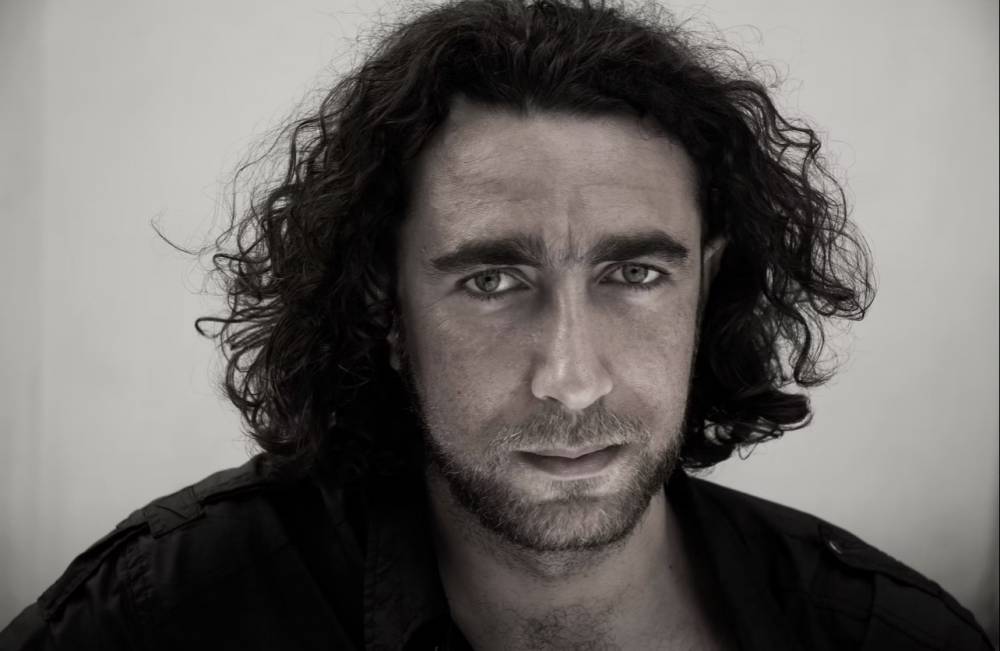
Thursday, September 4, 2025
|
Ada Kalu
Rarely is the camera used to protect. More often it serves to capture, expose, and surveil. Deborah-Joyce Holman’s Close-Up stands in defiance of this, offering an alternative to this use of the lens. Unburdened by distraction, the film is a quiet loop of carefully framed shots following actress Tia Bannon around an apartment. We focus solely on her face, shadowing the mundanity of her actions—filling a kettle, eating fruit, lying down—entranced by her preoccupation. There is no grand narrative, no sound beyond her movements, and yet, we are left wanting more. What is she doing? What happens next? The slow pacing and tight framing bear the weight of expectation. Surely, such close contact must satisfy our curiosity and bend to the whims of our desires. But even her absence—a two-minute window—is controlled. Waiting like expectant guests, we are left looking around. Presented with an opportunity to learn more about Bannon, her disappearance triggers the camera to shield once again, viewing her space through paced and lingering shots. These are the set terms for access. This deliberate refusal to accommodate or offer clarity is central to Holman’s practice. Close-Up refuses to placate, instead offering a tension and a kind of aliveness rooted in intimacy and resistance.
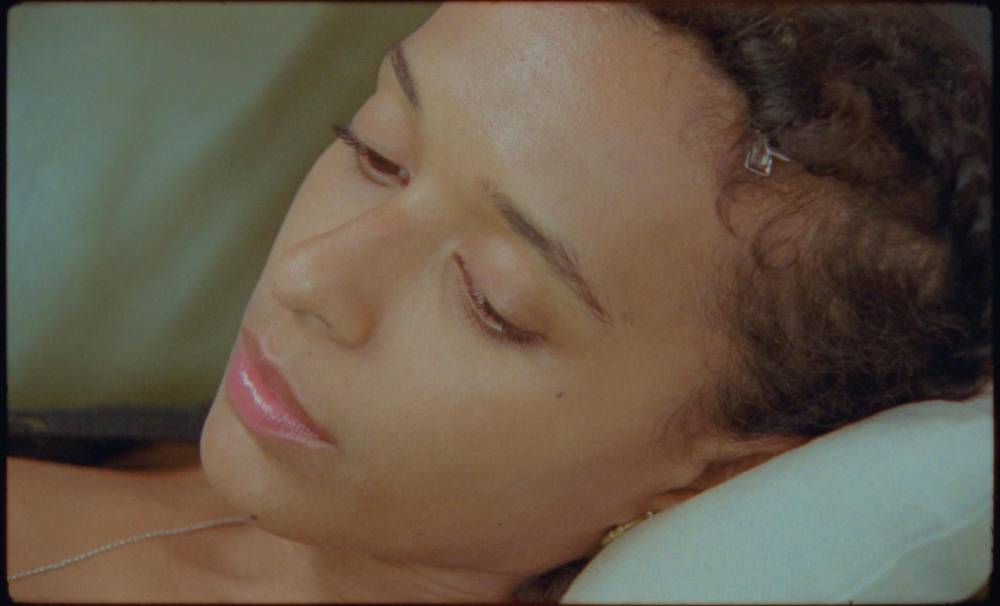
Tuesday, September 2, 2025
|
Nicolas Vamvouklis
Rebecca Ackroyd’s sculptural and pictorial worlds feel at once familiar and estranged. Dreamlike yet grounded in physicality, her practice spans drawing, sculpture, installation, and photography—often weaving together cast body parts, found objects, and domestic remnants into unsettling tableaux. Her figures, neither wholly present nor absent, evoke a surreal sense of interiority, vulnerability, and transformation. In her work, the body becomes both a site and a memory device—glitching, fragmented, and imbued with narratives that resist resolution. Born in 1987 in Cheltenham, UK, and now based between London and Berlin, Ackroyd studied at the Byam Shaw School of Art and completed her postgraduate diploma at the Royal Academy of Arts in London. Over the past decade, she has steadily built a compelling body of work that attracts international attention.
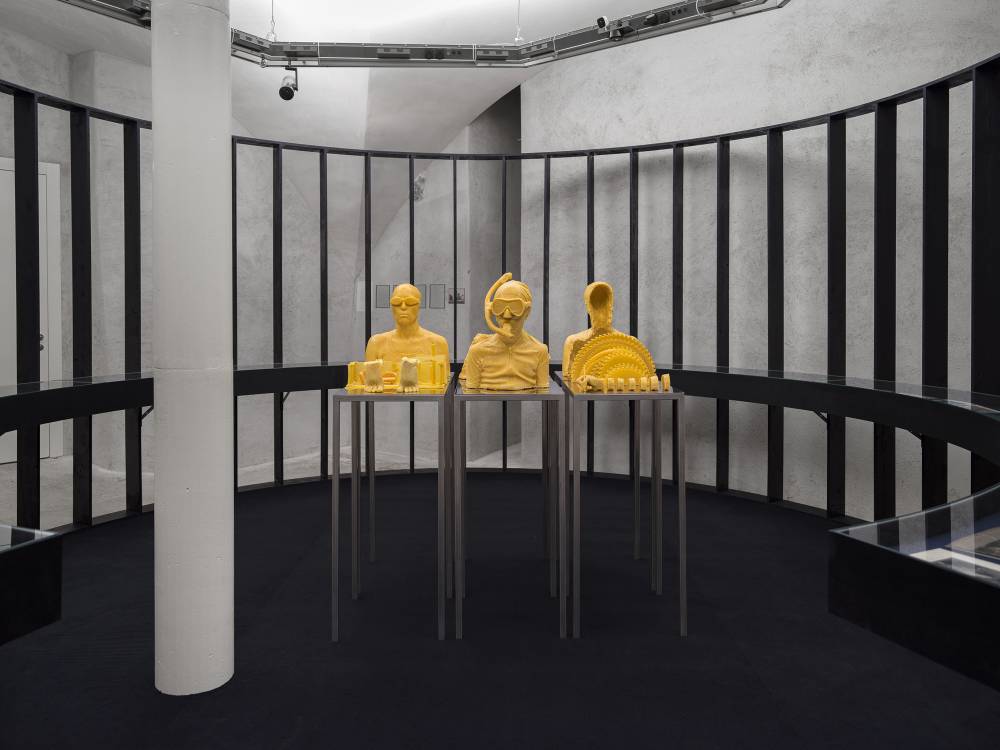
Tuesday, August 26, 2025
|
Gabrielle Willms
Before officially meeting Séamus Gallagher, I knew who they were, and every now and then, I would pass them walking through downtown Winnipeg. On more than one occasion, they were wearing an excellent yellow suit. And each time, this dash of colour against the dull beige and brown facades of Portage Ave shifted the tenor of my day. A little jolt of visual pleasure, in a city whose harsh climes reduce most of us to down-filled neutrals, is always welcome. Over time, it also struck me as a bit irreverent or even challenging, like a little ripple in our staid visual language, or an invitation, maybe, to play with our own public performances. As I’ve learned more about Gallagher’s practice, it’s become clear that they excel at pulling their audience in immediately, and then letting the critical questions their work poses simmer over time. Gallagher’s work is typically gorgeous, in the sense that it’s vivid and saturated, a delicious, over-rich eye candy. It’s also gaudy and strange.
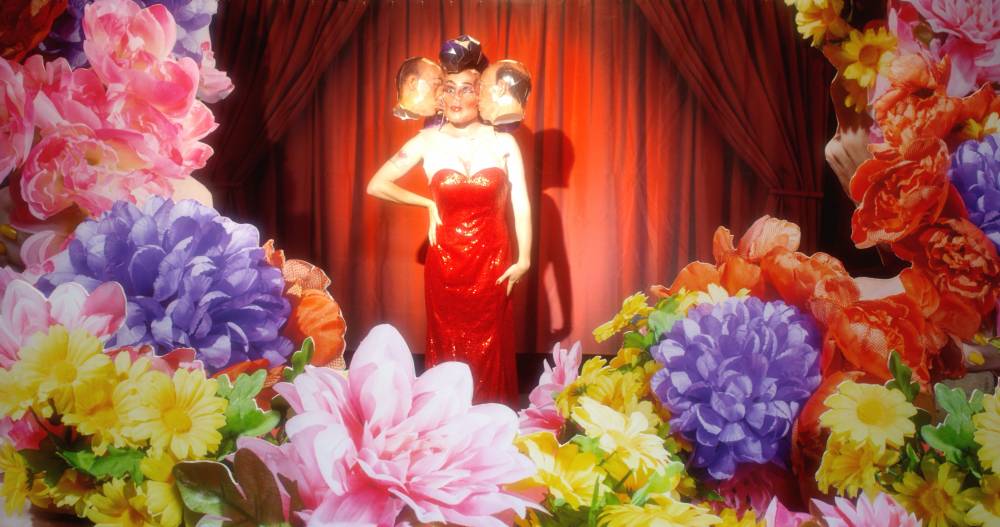
Wednesday, August 20, 2025
|
Doreen Nicoll
David Garneau first came to my attention when someone shared his 2013 painting Not to Confuse Politeness with Agreement on Twitter. The painting depicts Stoney Nakoda Chief Ubi-thka Lyodage (1874 – 1970) facing and shaking hands with an unknown young RCMP officer. Above the officer’s head is a square. Above the chief is a circle. I thought it brilliantly represented the challenge of (re)conciliation. So when I was invited to review his book Dark Chapters: Reading The Still Lives of David Garneau, I leapt at the opportunity. Garneau is a painter, writer, curator, and professor who currently creates metaphorical still life paintings that express Indigenous issues through common and uncommon objects.
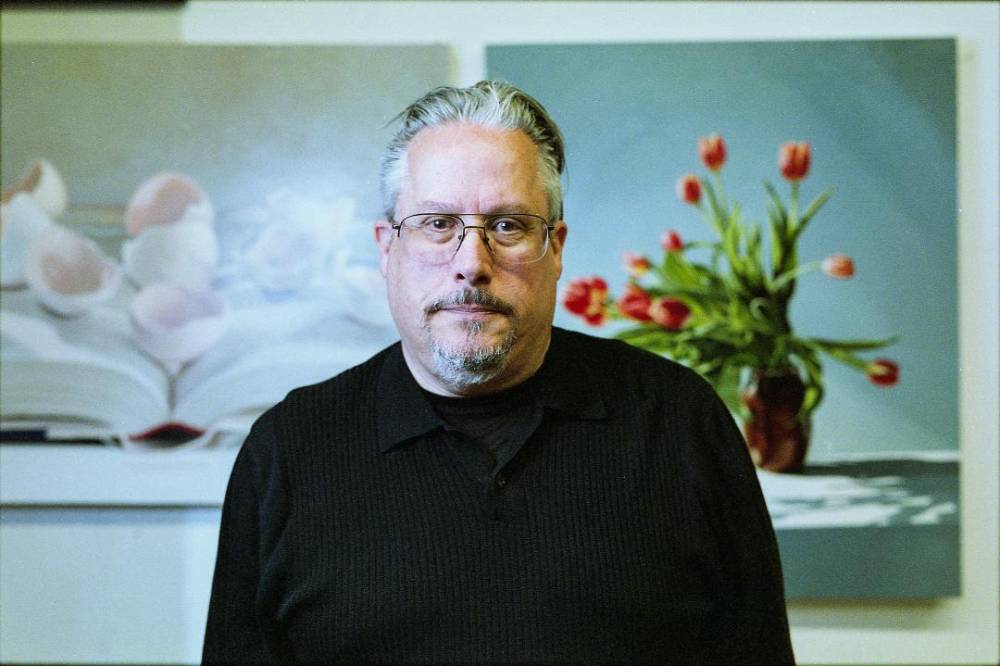
Monday, August 18, 2025
|
Abby Maxwell
It all started when I was chipping frozen milk flecks with the wrong end of the spoon into my coffee at the cabin. I left the carton outside overnight, resting in a snowbank. The cold had lured us out of bed before dawn to huddle around the wood stove. It was the morning after we harvested the rabbit from a snare fixed to a spruce branch—now a friend sat with her, dissecting her body into parts, her blood pooling onto the cardboard splayed out on the cold floor.
The icy milk chips thawed upon impact with the coffee, failing to incorporate and, instead, floating as a speckled mass of oily whiteness. It produced a reaction in the others—the visceral sort; disgust, like my own flinching, looking into the hare’s jet-black eyes or watching this friend’s hands peeling her fur off in one distorted piece. Two snow-white forms, in from the cold, on their way to feeding us.
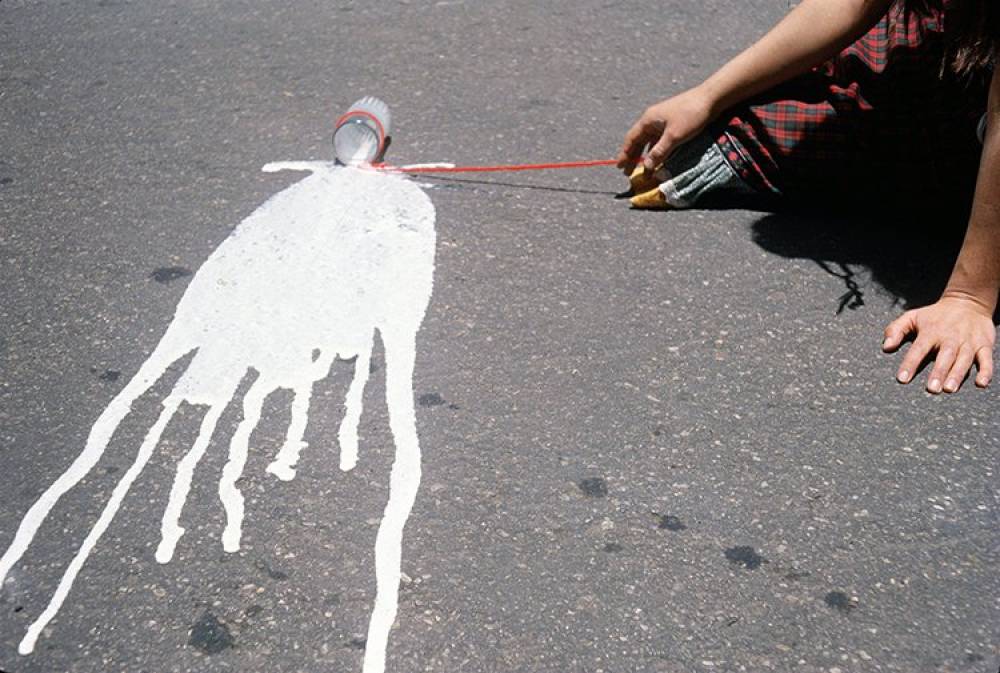
Monday, August 11, 2025
|
Kaya Noteboom
The nameless narrator of Lara Mimosa Montes’s new book, The Time of the Novel (Wendy’s Subway, 2025), makes a plain confession. “I was over being a person, one with a social security number, a natal chart, an undecided future, and a passport.” It’s an absurd thing to desire, and completely relatable. It should seem absurd that so much of what distinguishes a person as such is fundamentally impersonal: someone’s birth time and place, a set of randomized numbers, government-issued papers—stuff that’s all too easy to forget or misplace. Yet, the stakes of having or not having these materials couldn’t be higher as people in the US are being forcibly taken from their homes, their places of work, and off the streets to be deported, detained, and subjected to dehumanizing violence. What The Time of the Novel’s narrator attests to is that life as a person, vital items in tow, isn’t all that livable either.
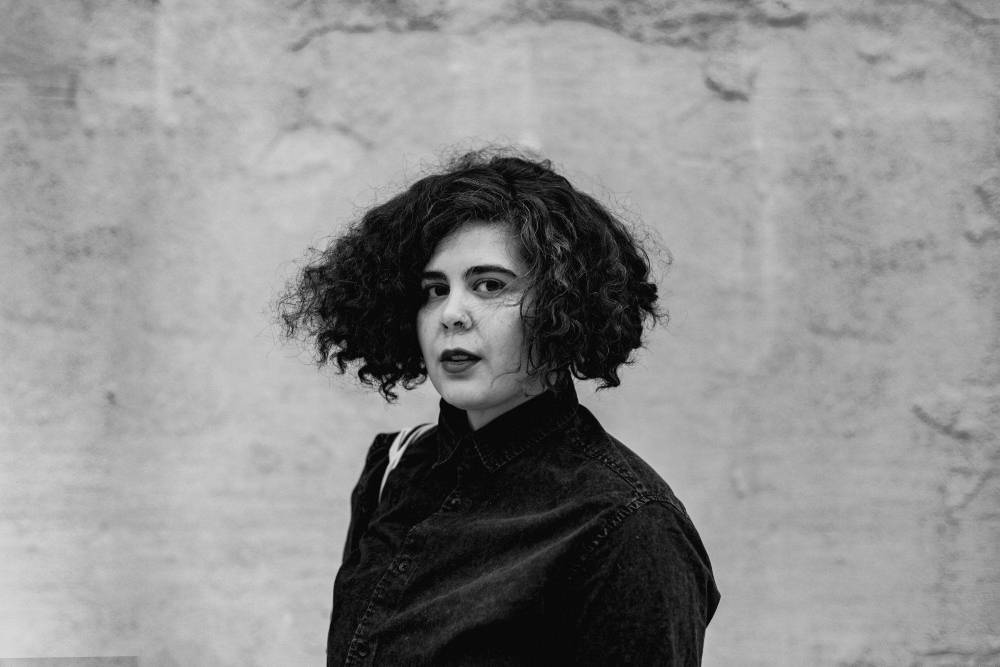
Friday, August 8, 2025
|
Antony Zelenka
At the back of the Manulife Centre, a luxury shopping mall along the “Mink Mile” in downtown Toronto, in an unassuming corridor of the movie theatre, is a piece of décor that is totally unremarkable for any corporate lobby, yet surprising when given a moment of pause: a saltwater fish tank, featuring a live coral reef. The fact that this and other publicly displayed aquaria have not yet been replaced with flat screens playing a 10-hour YouTube video on loop, “Best 4K Aquarium for Relaxation and Calm Sleep Music UHD,” stands out among today’s ornamental impulses, especially because of the murky challenge of keeping an aquarium’s micro-cosmos in delicate equilibrium (I say so, sadly, from experience). Aquarium fish remain ubiquitous in day-to-day life and are found in settings ranging from restaurant interiors, to tourist attractions, and medical waiting rooms. By sheer numbers, they are among the world’s most popular pets and comprise a multibillion-dollar industry, per a study of the global pet fish trade.
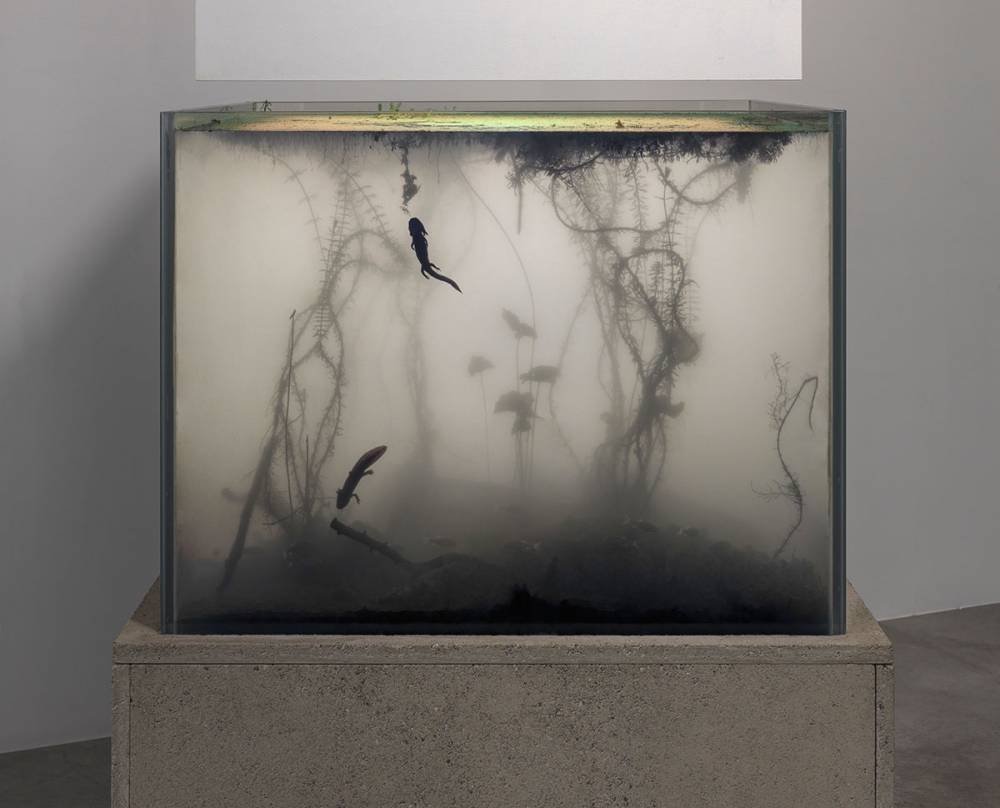
Tuesday, August 5, 2025
|
Michael Anthony Hall
When I first encountered Camila Arroyo’s work through Soldaderas nearly four years ago, I was immediately struck by her ability to command space and express unspoken language in her movements. The short film for the fashion brand Sabrina Ol captures Arroyo as she navigates Mexico City’s streets. The film feels less like a performance and more like an intimate conversation with the environment. Where movement, for her, was a private language that spoke to everyone, a pulse threading the soul to the surface of the world.
From the very start of our conversations, it became clear that Arroyo’s journey into dance was anything but conventional. “I don’t remember a time in my life without movement,” she shared. Her exploration of dance has always been driven by instinct and curiosity, pushing her to challenge norms and carve out her own path. From her initial resistance to traditional dance classes to her transformation through her time at the National Ballet School in La Habana, Cuba, dance became more than an art form—it became a lifelong practice, a devotion.
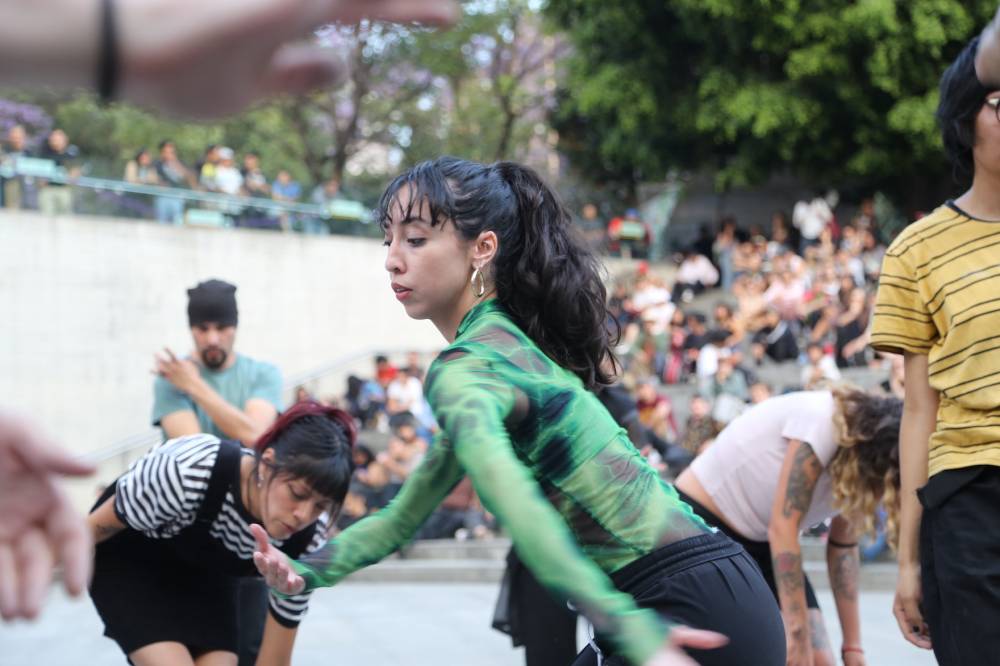
Wednesday, July 30, 2025
|
Shiv Kotecha
In the dim blue hue of an office light, we see a pair of eyes gloss over a floor strewn with dead, bloodied bodies. The eyes shudder and look out somewhere, into the middle distance; not at the walls of the conference room that enclose them, not directly at the glow of a computer screen. Below, a pair of hands continues to maniacally hit a keyboard. These furtive movements belong to Claire, played by the inimitable Kayije Kagame, the protagonist of filmmaker and artist Valentin Noujaïm’s chilling 2024 short film, 'To Exist Under Permanent Suspicion' (2024), who we watch, sit alone, but not alone, become like stone, or statuary, in her dark, corporate chamber. What does she see?
For nearly a decade, Valentin Noujaïm, who grew up in France as the child of Lebanese and Egyptian emigres, has been making films about the erasure of peoples and histories by the construct of empire and the bleak façades of “progress” erected in their stead. Le Défense, the looming business district to the west of Paris, built on razed shantytowns, gives the name to a trilogy of short films by Noujaïm (2022-25), each of which fuses documentary technique with mythic narrative to mine and undermine the monument’s rotting foundations.

Thursday, July 17, 2025
|
Hannah Azar Strauss
As I leave artist Lorna Bauer’s house after my visit to her home studio, our third meeting, she gives me a hug and wishes me luck on an upcoming move. We make plans for a drink on her back porch, “once things start to bloom.” Walking away I make notes on my phone about the visit. Patricia’s garden upstate. Daffodils, hydrangea, magnolia. Grouse like a dirt bike. Adair’s drawings. Pollinators. States of transformation.
Like glass in its molten state. Like the latent image on film as developer meets fixer meets water meets heat. Like a flowering tree in April in Montréal.
It's been only a few weeks since we first met. Although I’ve been following Bauer’s work for some time and we both live in Montréal, our paths hadn’t crossed before this profile. We meet in March, on what was the warmest day of the year so far—though it’s since been surpassed many times, thank god. An ugly, garbage-decked, rhapsodic Tuesday in late winter. I walk across a few neighbourhoods from my home to meet Bauer at one of Montréal’s big studio buildings, working up a seasonally-unlikely sweat, caught up in an impression of being passed on all sides by runners made quick by their freedom from specialty winter gear.
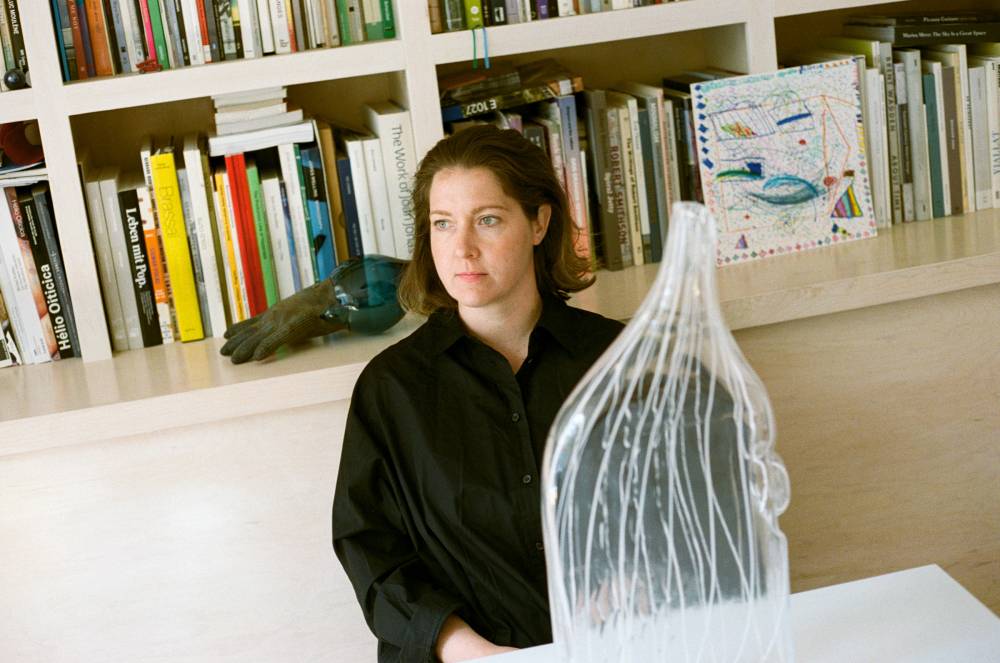
Monday, July 14, 2025
|
Danny King
The Canadian writer-director Naomi Jaye’s work frequently probes eccentric characters who pursue a peculiar agenda of routinized loneliness. Her first short, the madcap A Dozen for Lulu (2002), uses a stylized soundtrack (blaring alarm clocks, squeaky chairs) and an agile camera to depict two oddballs who share an enthusiasm for sprinkled donuts: a cheery, rollerblade-wearing ballerina who works at a hardware store, and a man in a fur cap who, with academic precision, nails the pastries to his workshop walls. Two of Jaye’s subsequent shorts, both starring the excellent Adrian Griffin, provide more subdued portraits of solitary souls. In The Raindrop Effect (2003), Griffin’s character, outfitted in a frumpy robe and brown loafers, endures the doldrums in his empty home—until he begins to forge a restorative relationship with the rainwater collecting in his leafy backyard. Arrivals (2007), also a single-location piece, deals with a man who perpetually hangs around an airport waiting area, looking on in hushed awe at the hordes of travelers reuniting. Arrivals leaves the reasons for the man’s loitering unstated, but The Raindrop Effect includes a touch more context for the despair. The man in the robe rummages through old crates bearing mementos, toys, and photos of a family at Christmas time. He dons a motorcycle helmet and stares at himself in the mirror—perhaps revisiting a particularly important memory.
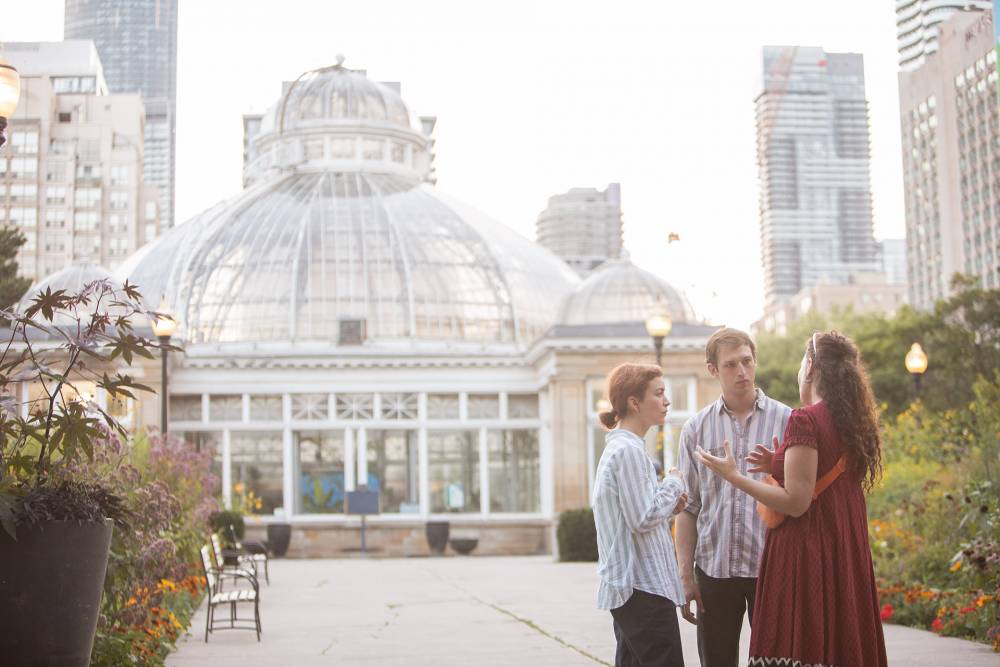
Wednesday, July 9, 2025
|
Shiv Kotecha
There is no vacancy in this world, no void, no vacuum. This is one thing I learn when I encounter the artwork and read the essays by Stanley Wolukau-Wanambwa. Every moment in life is durational, and every image we happen to see within it, an unfolding reel through which the social world is rehearsed, or composed, or erased, or betrayed, or determined. What do we desire from images? Whose lives are risked? In his installations and exhibitions, as in his precise, angular writing about art and photography, Wolukau-Wanambwa guides his viewers and readers into the darkly layered logics of idolatry, difficulty, and exposure that undergird photography’s capacity to represent black and gendered bodies, and the violent regimes of white supremacy and patriarchy that produce them.
I first saw Wolukau-Wanambwa’s work in person as part of the 2021 iteration of Greater New York at MoMA’s PS1, where a suite of images and objects were displayed against an entirely black background. Vivisecting the space was AMWMA (2021), a free-standing wall on either side of which was hung two, nearly identical life-size photos of the actor Anna May Wong.

"like a bell, or tuning fork”: in conversation with poet and interdisciplinary artist Danielle Vogel
Monday, July 7, 2025
|
Nasrin Himada
In this conversation, I speak with Danielle Vogel—poet, interdisciplinary artist, practicing herbalist, ceremonialist, and professor at Wesleyan University. Over the past 20 years, Vogel has written and published four poetry books that engage embodied poetics, feminist ecologies, somatics and ceremony. Our focus here is her most recent work, A Library of Light, published in 2024, which I first read in 2025, during one of the most intense winters in Montreal. It arrived at a time when I was seeking something I couldn’t quite name.
I was so moved by the way Vogel writes through grief—not around it, not away from it, but through it. For many of us diasporic Palestinians, as we continue to witness the genocide of our people, the grief is more than unbearable—grief is more than what language can bear. I was searching for a way to stay connected to that grief that didn’t close me off—a way that felt like an opening, something grounded, more integrated with what is.

Monday, June 30, 2025
|
Kate Nugent
Throughout the Balkans and Southeastern Europe there is a popular folktale that describes the tragic, sacrificial immurement of a woman to ensure the successful construction of a building. From Albania to Georgia, around 700 variations of the myth exist, including “The Bridge of Arta” in Greece, “The Building of Skadar” in Serbia, “Clement Mason” in Hungary, and “Master Builder Manole” in Romania. Though the constructions in these tales vary from bridges, to fortresses, to monasteries, they share the same basic narrative: a man sacrifices a woman against her will in order to create the foundation upon which a structure can be built. Romanian-born artist and filmmaker monica maria moraru recently explored the Master Builder Manole myth in her exhibition The Foundation Pit. In the exhibition, moraru not only revisits the myth and its cultural influence but also considers the intertextual links between the sacrifice-for-construction myth and the literary work from which the exhibition derived its title: Soviet writer Andrei Platonov’s novel The Foundation Pit.
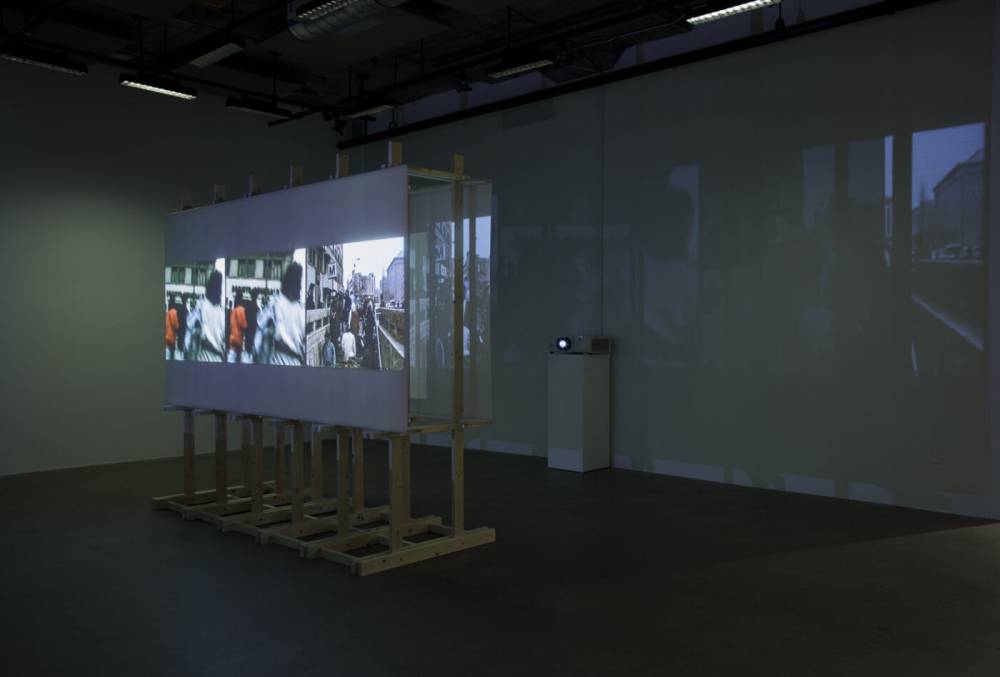
Wednesday, June 11, 2025
|
AO Roberts
I met multidisciplinary artist ESO MALFLOR in Minneapolis while I was an artist in residence at Dreamsong Gallery in 2024. When we met, they told me about their land-based practice and recent experiments with clay. I also had recently started working with clay, making small ceramic sculptures to 3D-scan into a virtual world, while MALFLOR had been using clay in drawing and performance. They described their performance Equilibria (2023), in which they covered themself and the performance space with a full tonne of clay. Accompanied by violinists Arlo Sombor and Creeping Charlie, they made micro-movements over an hour while the clay slowly flaked off. Intrigued to learn more about their practice, I visited their studio tucked above a rummage shop on an early spring day in March.
At the time, MALFLOR was preparing for their show, The Earth is a Body in Transition, at HAIR + NAILS. Their small workspace was packed with scavenged materials, burnt remains of buildings, carved charcoal, and conglomerations of bones and nails.
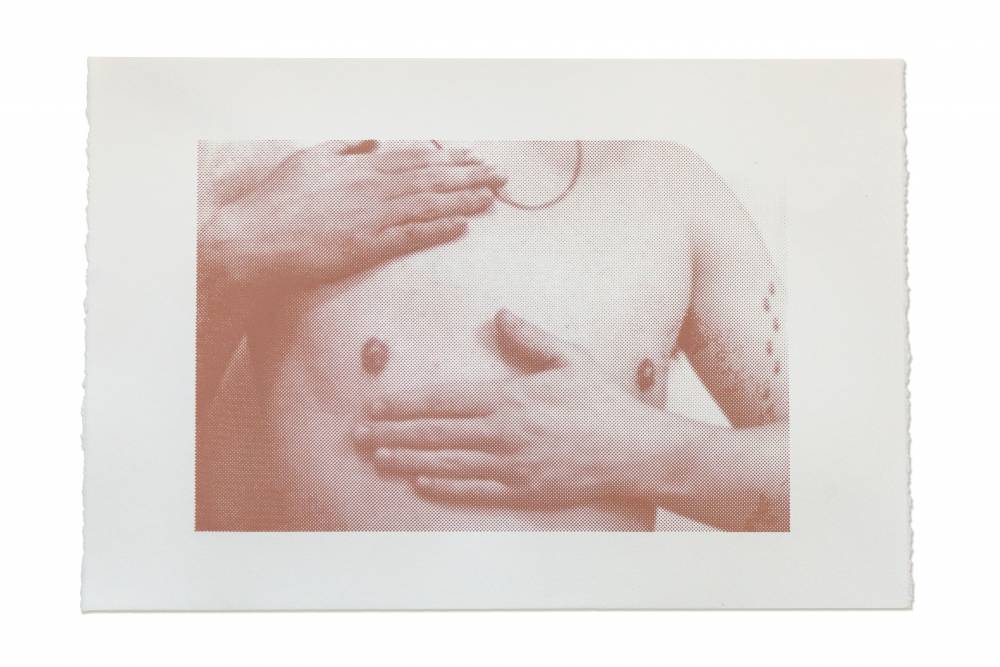
Wednesday, June 4, 2025
|
Hannah Strauss
Almost twenty years since being introduced to Scott McCloud’s Understanding Comics, a few of its pages still regularly come to mind. One panel in particular, in which a face is progressively whittled down to its simplest graphic form, two dots and a line, has really stuck with me. The narrator asks, “WHAT IS THE SECRET OF THE ICON WE CALL – THE CARTOON?” And in the next panel, “WHY - ARE - WE - SO - INVOLVED?” McCloud poses a question to the reader about why this brutally diminished form is still so “acceptable” to us – why, rather than estranging, it can open up a space for identification more immediate and reliable than one highly realized.
For those more widely read in the genre than I am, it might feel a bit reductive to open an interview with Walter Scott, the Kahnawà:ke-born, Tiohtià:ke (Montréal)-based interdisciplinary artist and author of the much-loved Wendy comics, with reference to McCloud’s classic introduction. But I thought about these panels while preparing to interview Scott, not just because he makes comics, but because his work foregrounds the genuinely mysterious capacity of caricature to both reduce and elaborate character. Scott’s figures and their attendant objects (or his objects and their attendant figures) capture simple being – for instance, the plainly apparent experience of misery, that infinitely non-universal universal. Simultaneously, they offer us characters nobody could fail to recognize as vitally specific, differentiated, subtly or not, by their particular features. I mean class, race, gender, but also eyebrows, shoes, or types of ambition.
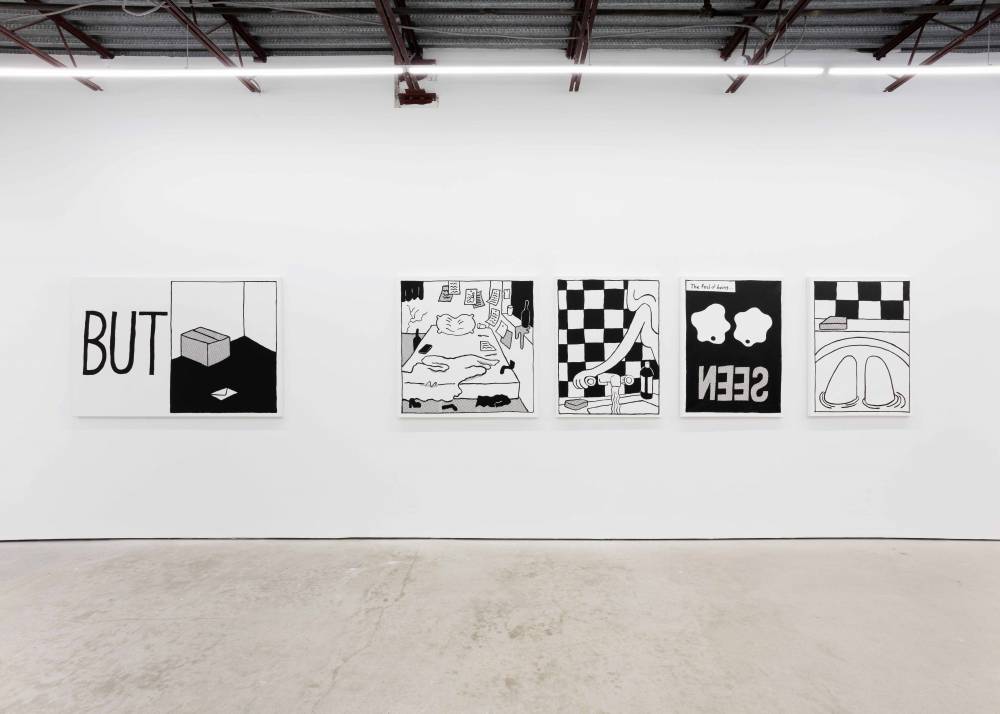
Tuesday, May 20, 2025
|
Nasrin Himada
The conversation that follows below began in the fall of 2024, shortly after I saw Razan AlSalah’s film 'A Stone’s Throw' at Prismatic Ground, an annual festival dedicated to expanded documentary and avant-garde film, curated and run by Inney Prakash. AlSalah is a filmmaker and teacher based in Montreal. What I am drawn to with AlSalah’s work is her ability to pull us into an image, or have the image spatialize our cinematic experience in a way that feels tactile, immersive, moving, and expansive. Her work engages the material implications of image-making, particularly through the layering of multiple narratives and the branching pathways that gesture toward a relational movement of diasporic living. At its core, there is an anti-colonial vision—one that insists on the resurgence of life on Indigenous lands while rupturing the colonial image. Her films often operate as “ghostly trespasses,” bypassing the seemingly fortified map of colonial borders. For AlSalah, filmmaking is a form of collective memory-making, unfolding in relation with others, with place, and with the unknown.

Wednesday, May 14, 2025
|
Lindsay Inglis
Over the past few years, artmaking became an extension of parenting for Dominique Rey. She created matching costumes for her and her children, Madeleine and Auguste Coar, and would set up a camera for a period of what she called ‘intentional play.’ In doing so, Rey captured images honouring the relationship between mother and child.
I first met Rey at her studio in Point Douglas, where she invited me over for tea after I reached out about this article. After months of researching her work, I was running late and worried I was making a bad first impression. She didn’t mind though and spoke generously about her practice and the then upcoming solo exhibition at the Winnipeg Art Gallery, Motherground. She showed me the photos included in her exhibition as well as the gallery maquette with the exhibition layout, and there was also prototype of one of the sculptures in the corner of her studio. Rey had piles of art books on motherhood, on various photographic projects surrounding motherhood and on what it meant to be an artist and mother. One of the books was Home Truths: Photography and Motherhood, edited by Susan Bright, who Rey was excited to share had contributed an essay to Motherground’s catalogue.
Thursday, May 8, 2025
|
Conor Williams
Lynne Tillman writes books–novels, short stories, essays, criticism–that continuously provoke thought. Since the late 80s and the formation of the New Narrative movement in American literature, Tillman has created a body of work deeply engaged with art, culture, history, ourselves, and our relationships with one another.
The first book of hers I read was her 2018 novel Men and Apparitions about an ethnographer named Zeke who studied family photographs. Tillman’s seamless blend of found images, commentary and aphorisms on pop culture, and a narrator naturally inquisitive about others so hooked me that I spent my summer after college reading it so slowly, wishing that both the book and the sunny freedom of being on my own in upstate New York would never end. Drawn to documenting things myself, I related to Zeke, as I had just finished school and made a short diary film about my family and my grief. Not only that, but halfway through Men and Apparitions, the main character experiences a personal betrayal that closely, painfully mirrored something I myself had gone through in the last weeks of my graduating year.
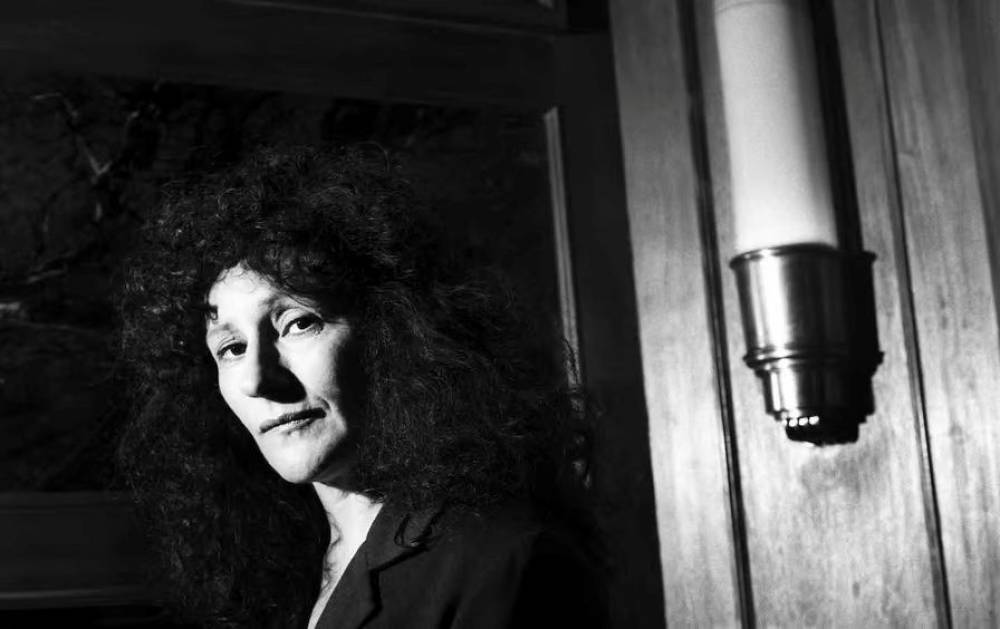
Tuesday, April 29, 2025
|
Gabrielle Willms
Hannah Godfrey was working at the Cube Microplex in Bristol when she first realized she was an artist. Training to be a 35 mm projectionist—“it took me about seven years,” she jokes—in the Cube’s “anarchic” environment provided the perfect, scrappy setting to experiment creatively. For someone who didn’t go to art school, the Cube offered an incredible “sense of possibility.” Putting on exhibitions, booking bands, and screening alternative cinema, she was learning how to make things happen while trying them herself. “You could do anything,” she recalls fondly. She was part of a noise band that only ever played in the crawl space under the audience. She joined the skate team—“Some of us were really shit,” she laughs— and started making zines. One night, she was invited to do an improvised performance. A wild New Yorker persona, “The Electric Kasey-O,” emerged, playing beats on her sister’s champagne-hued casio keyboard and making up songs about people in the audience. It was the ideal incubator for an eclectic, subversive DIY artist and programmer coming into her own.

Tuesday, April 22, 2025
|
Julia Eilers Smith
When I arrive at Joseph Tisiga’s home in Anjou, a neighbourhood in Montreal’s far East End, he is outside smoking a cigarette and scrolling through his phone. “The world news is hitting a higher octave these days,” he says in greeting, his dark brown eyes widening as he takes another drag. There’s a weariness in his voice that hints at a deeper exhaustion. Perhaps its the weight of a mind continually processing the world in complex ways. Or its simply the strain of parenting a young toddler.
Conversations with the Kaska Dena artist tend to mirror the tone of his work: ruminative, at times brutally honest, always grappling with society’s fractures, its truths and its untruths. Though he enjoys long stretches of solitude in which he can let his mind wander (he used to take dishwashing jobs in Winnipeg and Vancouver simply so he could think through entire shifts), he is also a big talker. “I always joke that you almost need a seatbelt for your brain when you’re chatting with Joseph, because you’re on a ride and it’s going fast,” observes Mario Villeneuve, a longtime friend of Tisiga’s, over the phone from Whitehorse. “He has such a broad interest in everything. We’ve had many nights of rambling conversations, puddle-jumping from one thing to the other,” he adds.

Monday, April 14, 2025
|
Aidan Chisholm
Soap: the most quotidien of the quotidien; also, a nearly 120 billion USD global industry playing both to aspirational consumerism and anxieties of contamination as a reminder of the messiness of our mortal bodies; also, a crystallization of hygiene as a category far exceeding health-related concerns as a phenomenon tied to constructs of race, class, gender, and sexuality; also, art.
Soap has appeared as a motif throughout art history—from seventeenth-century Dutch oil painting to twentieth-century Surrealist photography—yet the past three decades have marked a shift from the visual representation to the direct incorporation of soap in installations charged with familiar sensory resonance. Though rife with symbolism, soap far exceeds metaphor as a tactile, aromatic medium that confronts the ontological object-ness of the precious artwork. Whether defamiliarizing soap or reveling in its familiarity, artists across contexts approach the substance through distinct tactics, yet with shared attention to materiality. As a prop implicated in the physical and ideological maintenance of the illusory boundary of the skin, soap confronts the politics of purity. Materially, while also symbolically, soap enables artists to question prevailing fantasies of the discrete, sealed-off human body without playing into the identity politics of figurative representation.
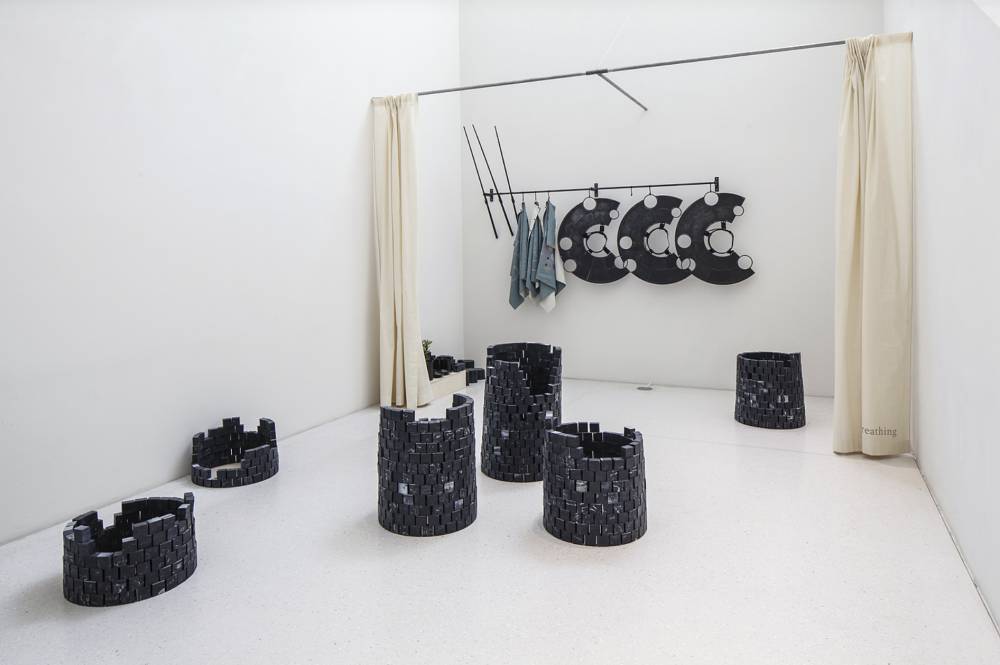
Tuesday, April 8, 2025
|
Tammer El-Sheikh
Muhammad Nour Elkhairy is a Palestinian filmmaker, video artist, and film programmer from Jordan, currently based in Tio'tia:ke (Montréal). He holds an MFA in Studio Arts: Film Production from Concordia University. His experimental fiction and non-fiction video works are concerned with the legacies of colonial, political, and economic power in and beyond Palestine. Elkhairy’s work has been shown in several international film festivals and art galleries. Several years ago, I wrote about Elkhairy's video work I would like to visit (2017) for an article in Canadian Art on new directions in conceptualism. We discussed that work a little in the interview that follows. But when we sat down to chat, I was especially interested in hearing about his more recent works – works on Palestine, film culture in the Arab world, and the best-known Arab actor in the West, Omar Sharif (1932 – 2015). I learned about the last of these, two works titled Omar and Lawrence and Omar, What’s Good? in conversation with the painter Amanda Boulos as I was preparing an earlier essay for this Editorial Residency. Like Boulos, El-Khairy makes a needed and buoying contribution to the unfolding history of diasporic Palestinian art.
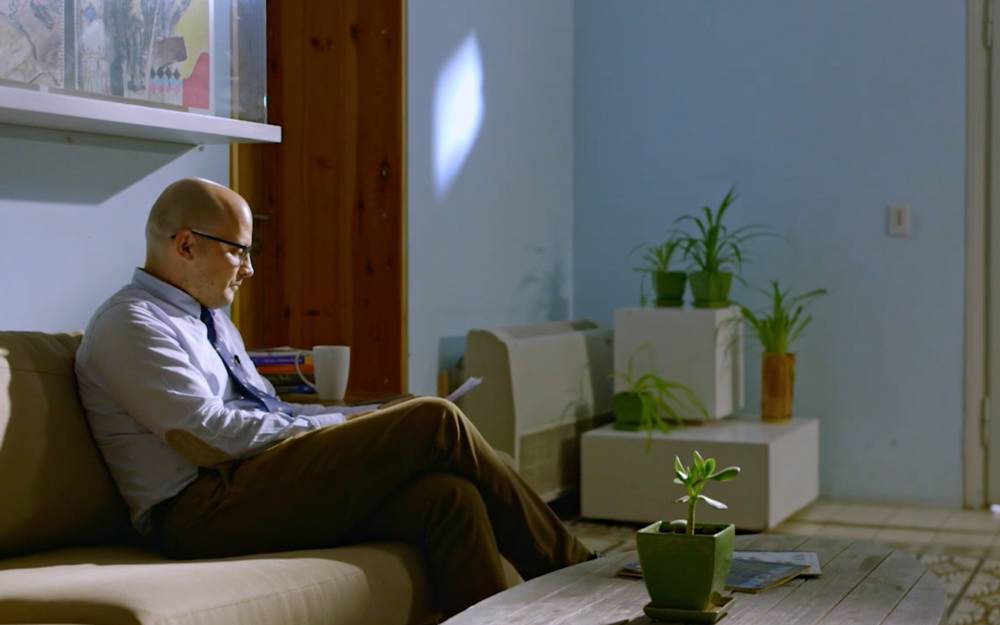
Friday, April 4, 2025
|
Ada Kalu
Photographs are a small act of sentimental preservation. Photo albums, scrapbooks, and videos are sites of revisitation and display, and as such contribute to the legacy of the museum as a cultural archive. As an institution, the museum has always been a conservative stronghold—a constant from its privatized roots to its marked transition to a public locale. A portrait of preservation, its artefacts are protected by extensive security measures and object handling rules that safeguard these relics of history. But the rules of safeguarding have changed, and the evolution of archiving means connecting with history in an advanced technological era. So what does this mean for our relationship with the past?
In 2023, Press Gazette recorded a loss of 8,000 journalism jobs across the UK and North America, spotlighting the growing graveyard of media careers. Between 2016 and 2022, a string of articles started appearing on news platforms across Nigeria, questioning the shrinking presence of newspaper vendors in the country. Surmised more recently in a Reuters Institute study, the answer lies in the high cost, low reward rationale of traditional print media. Publications are incentivized to digitally circulate their content due to a growing online audience. The bundling of news publications through subscription-based services means getting more money for your buck.
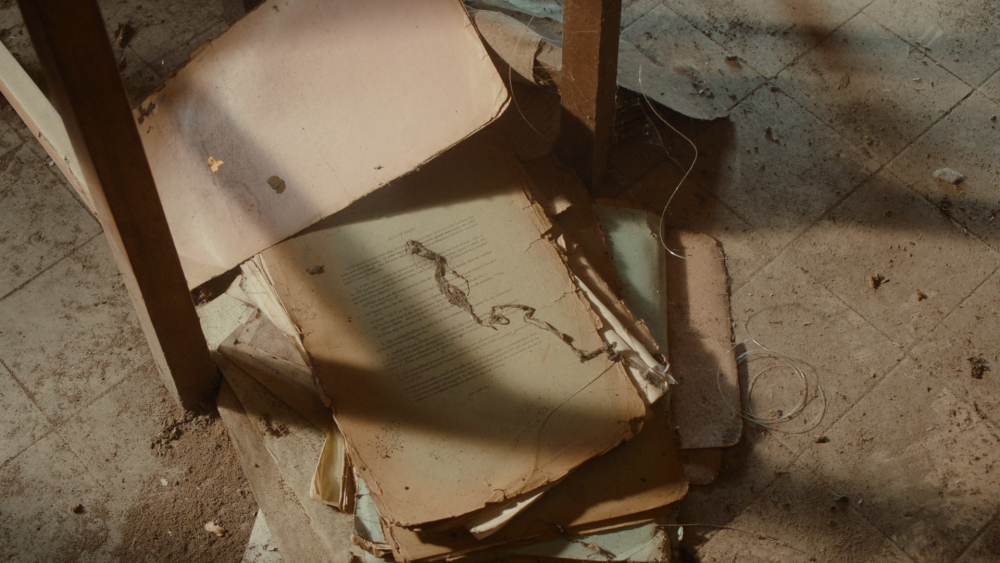
Monday, March 17, 2025
|
Milena Estrada
I was aimlessly scrolling through my Instagram feed when my screen was engulfed by a blue light. I was taken aback by a video of an underwater Times Square; along with the images, the sound of a submarine ecosystem soothed me, making me stop and take a few minutes to fully grasp what I was seeing.
Before me was Mulan, a video by Montreal-based artist––from Chinese descent––Chun Hua Catherine Dong, projected on 95 digital billboards. The first time I watched the video was in a virtual reality headset but the effect was similar as I was transported into an aquatic environment full of color and marine creatures cohabiting with human figures dressed with the traditional Chinese opera attire. What compelled me was the work’s innovative symbiosis between “natural life” and “human culture”, between life above and below the surface as well as the hybridization of digital design and drawing techniques. The artist defines it as an exploration of Chinese folktales, gender and our “right to complexity and to range”.
Originally a performer, Chun Hua Catherine Dong is a cross-disciplinary artist working with a vast array of mediums such as photography, 3D printing, virtual reality and artificial intelligence. Their artistic practice focuses on themes related to memory, migration, identity and gender.
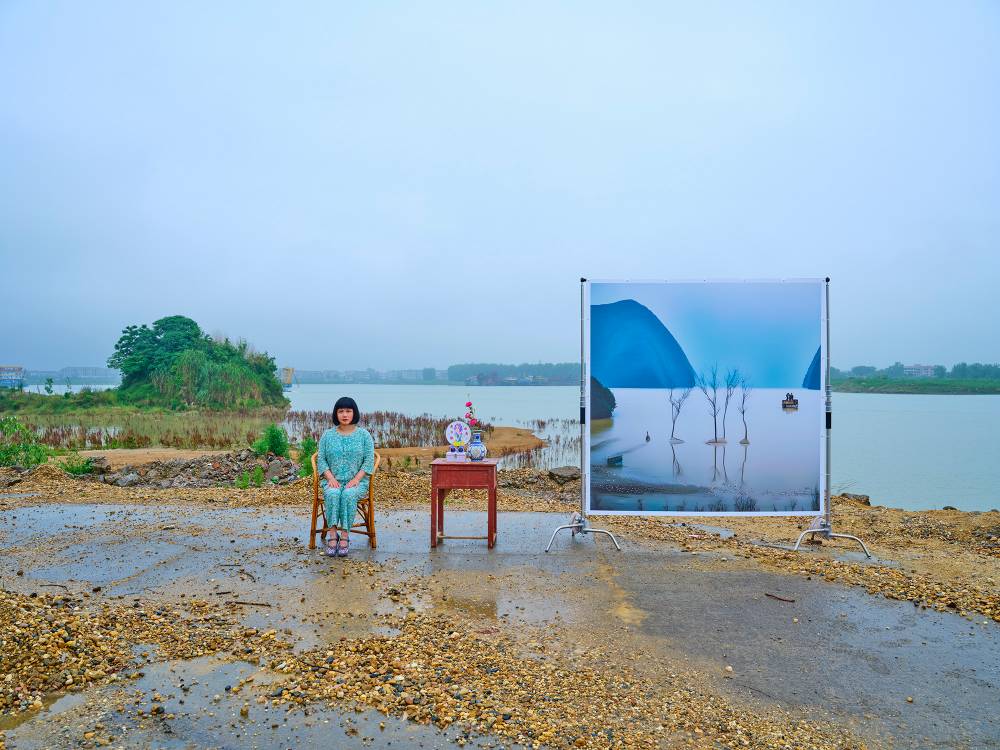
Thursday, March 6, 2025
|
Zachary Ayotte
In his introduction to Permanent Red, first published in 1960, John Berger offers an approach to art criticism that begins with a simple question: “What can art serve here and now?” Berger was a fervent Marxist, and his style of criticism reflected the social and political concerns that dominated his work. He believed, among other things, that the 20th century was “pre-eminently the century of men throughout the world claiming their right to equality.” When he looked at a work of art he asked if it helped or encouraged people to know and claim their social rights. He didn’t mean this literally—such an approach, he said, would result in a sort of propaganda. Instead, he thought a work of art could allow a viewer to understand the world differently—to retain and remember an artist’s way of seeing the world. This, he said, helped a viewer to understand that they were in relationship to the world—something Berger believed held the promise of action. Through this lens, art is a means of unlocking a person’s potentiality—the possibility of being awakened to one’s relationship to the world and then, with eyes open, participating in it. I’ve had Berger’s question on my mind lately: What can art serve here and now? The answer depends on the conditions of the here and now, which, of course, are myriad: climate change, extreme inequality, a loneliness epidemic, mental health issues, wars, extremist and authoritarian politics, and distrust of institutions. But from this heap, a theme emerges—something the writer and filmmaker Astra Taylor refers to as insecurity.
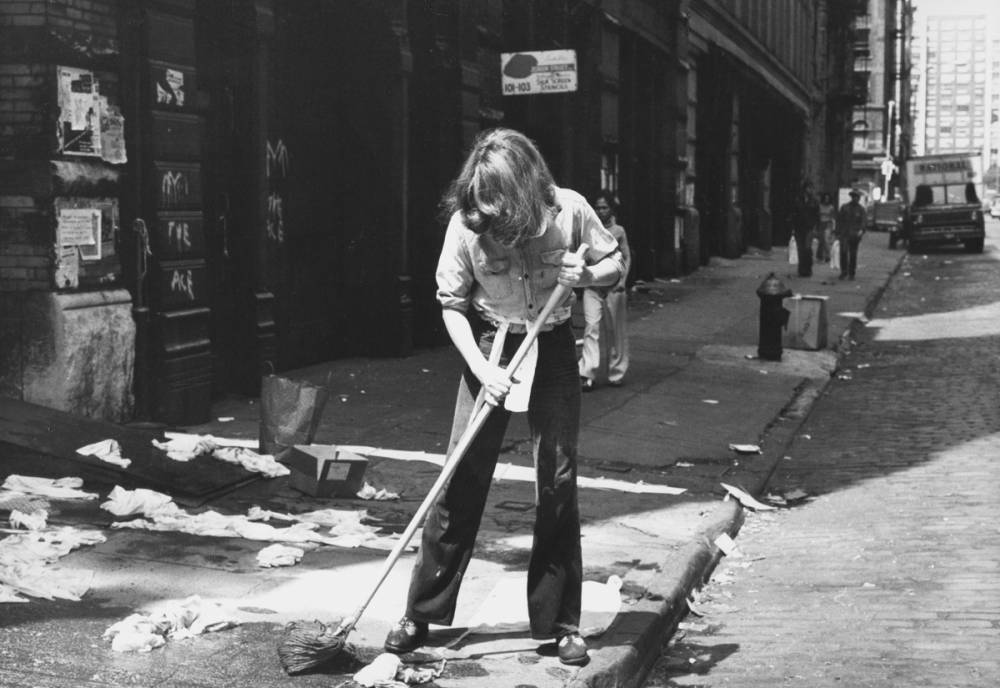
Monday, March 3, 2025
|
Isaac Würmann
John Kameel Farah has something to say. In a recent video posted to his social media accounts, he can be seen playing a harpsichord ahead of a concert in Amsterdam. “Many Europeans would probably deny the connection, but to me it seems obvious that the harpsichord/cembalo is a musical descendant of the kanoun, an instrument used in Arabic/West Asian music,” he wrote in the caption of the post. “In addition to playing masterworks by Bach, Byrd and others, I love to stylistically invoke the kanoun through the harpsichord, firstly because I love the sound, and also because it illustrates a historical point of connection.” As a classically trained pianist and composer who was born in Brampton, Canada to Palestinian parents, it is that point of connection that John strives to convey in his music. While he embraces Baroque and early music (he says Bach is the one of the main reasons he got into music as a child), he also borrows freely from other genres, including the vast spectrum of Middle Eastern music that he grew up listening to at home, electronic music and experimental jazz. His performances are physical feats as he jumps between piano and synthesizer in endless interpolations and improvisations on classical and Middle Eastern melodies, weaving them together to create contrapunctual compositions that he describes as “Baroque-Middle Eastern-cyberpunk.”

Wednesday, February 12, 2025
|
Yifan Xia
“一方水土养一方人 (Yi Fang Shui Tu Yang Yi Fang Ren)” is a Chinese idiom that has long been associated with regional ecology. The many ways nature nurtures our communities resonated with me on a personal level as I began to pull apart the phrase in order to grasp its literal meaning: What we are is shaped by the water and soil (水土, Shui Tu) surrounding us.
“Water and soil” is supposed to be a figure of speech describing natural conditions. A similar term would be “river city,” a concept brought to my attention thanks to the trans-disciplinary scholarship dedicated to waterfronts (for example, River Cities, City Rivers 2018). As a result, I uncovered a new line of inquiry. Animated by drawings and maps found across Eastern and Western civilizations, this body of scholarship tells us how rhythms of life have aligned themselves to the ebbs and flows of great rivers, lakes, and oceans. But the concept of a “river city” also hints at a looming question—would these traditions still have a place if that rhythm fell out of balance?
